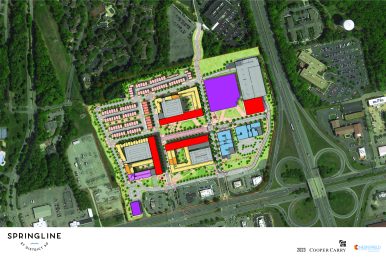Hotel revenues in Virginia were 14.9% higher in February compared with pre-pandemic levels, largely because of increased room rates, according to data released Tuesday by STR Inc., a division of CoStar Group Inc. that provides market data on the U.S. hospitality industry.
Hotel rooms sold increased by 4.3% last month compared with February 2019. The average daily rate (ADR) for hotel rooms was $108, a 10.2% increase from February 2019’s rate. Revenue per available room (RevPAR) stood at $55, up 13.6% from the same month in 2019.
But, as in January, when revenues were also up 14.9% over pre-pandemic levels, “substantial increases in hotel revenue in almost all markets … can be easily attributed to higher room rates rather than increases in occupancy or increases in hotel rooms sold,” Vinod Agarwal, deputy director of Old Dominion University’s Dragas Center for Economic Analysis and Policy, said in a statement.
The Hampton Roads and Richmond markets have fully recovered from the pandemic, but Northern Virginia revenues remain below pre-pandemic levels. In 2019, those three markets generated about 77% of Virginia’s total hotel revenue, according to a news release from ODU‘s Dragas Center, and 43% of the total revenue came from the Northern Virginia market.
Hotel revenue in Northern Virginia decreased 4.3% from February 2019, and rooms sold in the region decreased 9.1%. In August 2022, Northern Virginia hotel revenue was down by 20.4%.
Nonetheless, Northern Virginia is seeing a rebound, Virginia Restaurant, Lodging & Travel Association President Eric Terry said.
“I am hearing the school youth groups are coming back,” he said. “That’s a real plus. That’s always been a staple of our spring business up in Northern Virginia.”
The Staunton/Harrisonburg, Hampton Roads and Blacksburg markets saw the largest increases in revenue compared with February 2019, up 38.1%, 37.7% and 33.6%, respectively. Rooms sold in Staunton/Harrisonburg increased 19.3% from pre-pandemic levels. The Blacksburg market saw an 18% increase in rooms sold.
Within Hampton Roads, the Virginia Beach submarket saw the largest revenue increase — 45.1%— while the Chesapeake/Suffolk submarket had a comparable increase of 42.3%, and the Norfolk/Portsmouth submarket saw a 41.4% increase. The Newport News/Hampton market had the slowest revenue growth, with a 26.6% increase from February 2019.
Hampton Roads rooms sold in February increased 13.2% from the same month in 2019. The Norfolk/Portsmouth submarket saw a 21.9% increase in rooms sold, the largest increase in the region. The Williamsburg submarket followed, with a 16.5% increase in rooms sold, and the Chesapeake/Suffolk submarket saw a 14.6% increase.
In Central Virginia, the Lynchburg market saw a 26.3% increase in revenue over February 2019’s total and a 14.6% increase in rooms sold. Richmond, meanwhile had a 17.4% increase in hotel revenue and a 5.1% increase in rooms sold. In Charlottesville, hotel revenues increased 22.7% compared with February 2019, and rooms sold increased 5.6%.
Hotel revenue in the Roanoke market rose 9.5% from pre-pandemic levels, although rooms sold declined by 5.1%. In the Bristol/Kingsport area, hotel revenue rose 15.8%, but rooms sold declined 3.9%.
“There was growth in almost every market,” Terry said, “and the rate continues to be stronger than the previous year, so that’s helpful, at least in terms of profitability for the hotels.”
A full recovery, especially for Northern Virginia, relies on the return of corporate travel and returns to government offices, Terry noted.




